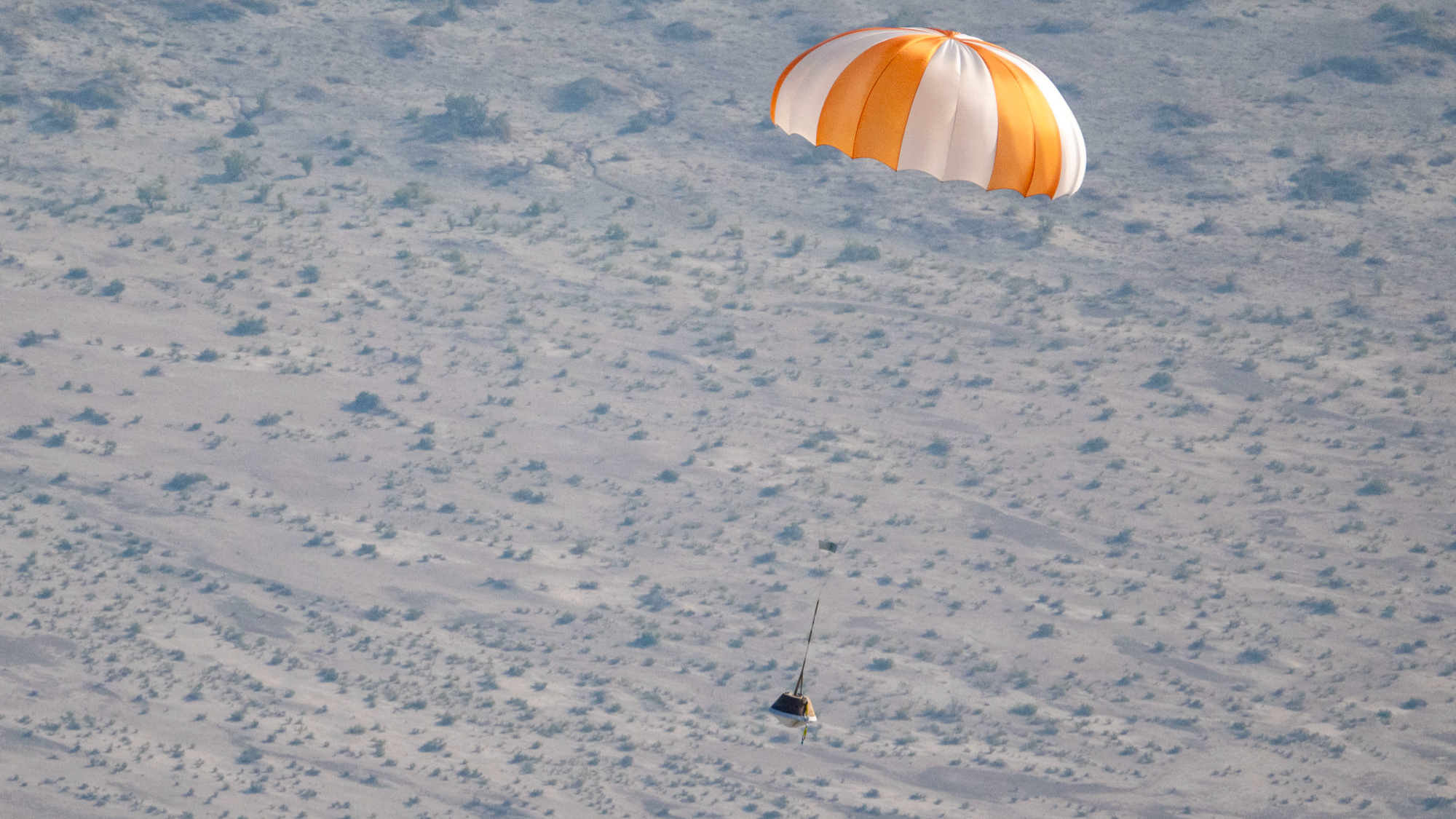
NASA is wrapping up its preparations for the landing on Earth of a precious asteroid sample next month.
Teams with the agency's OSIRIS-REx mission performed a crucial test on Wednesday (Aug. 30), retrieving a dummy capsule that fell to Earth in the U.S. Department of Defense's Utah Test and Training Range, in the desert west of Salt Lake City.
That's where OSIRIS-REx's real sample capsule, containing about 8.8 ounces (250 grams) of material from the near-Earth asteroid Bennu, will touch down on Sept. 24.
"We are now mere weeks away from receiving a piece of solar system history on Earth, and this successful drop test ensures we're ready," Nicola Fox, associate administrator of NASA's Science Mission Directorate in Washington, said in a statement on Wednesday.
"Pristine material from asteroid Bennu will help shed light on the formation of our solar system 4.5 billion years ago, and perhaps even on how life on Earth began," Fox added.
Related: Dramatic sampling shows asteroid Bennu is nothing like scientists expected
OSIRIS-REx launched in September 2016, on a mission to study and snag samples from Bennu, a potentially dangerous asteroid about 1,650 feet (500 meters) wide.
The spacecraft arrived at Bennu in December 2018. It then eyed the asteroid up close for nearly two years, taking the rock's measure and looking for good places at which to swoop in and grab a sample.
That moment arrived in October 2020, and it came with a fair bit of drama and surprise.
"We thought for sure we're going to touch down on a solid surface — this was an asteroid, it was a rock from outer space — but it actually responded more like a fluid, like if you dropped yourself into a ball pit at a children's playground," OSIRIS-REx principal investigator Dante Lauretta, of the University of Arizona, said during a press conference on Wednesday.
"The good news was, because of that really soft surface, we collected an enormous amount of material," he added.
That material is now winging its way to Earth aboard OSIRIS-REx, whose name is short for "Origins, Spectral Interpretation, Resource Identification, and Security–Regolith Explorer." The mission team has been practicing for its arrival for a while now, conducting a series of tests this spring and summer. Wednesday's capsule recovery is part of the last major practice run, NASA officials said.
After the capsule touches down, it will be transported to a clean room on the Utah military range, where it will be processed. The Bennu material will then be sent to NASA's Johnson Space Center in Houston, where it will be curated and stored.
Over the coming months and years, some of this asteroid material will be sent to scientists around the world, who will study it for clues about how our solar system formed and evolved.
Researchers will also look for evidence of organic molecules, the carbon-containing building blocks of life. Carbon-rich asteroids like Bennu are thought to have delivered much of this material to our planet, along with lots of water, through impacts long ago.
OSIRIS-REx itself isn't landing on Earth next month, by the way: The probe will keep flying, on an extended mission to explore the asteroid Apophis.
OSIRIS-REx is scheduled to arrive at Apophis — like Bennu, a potentially hazardous asteroid — in 2029.







